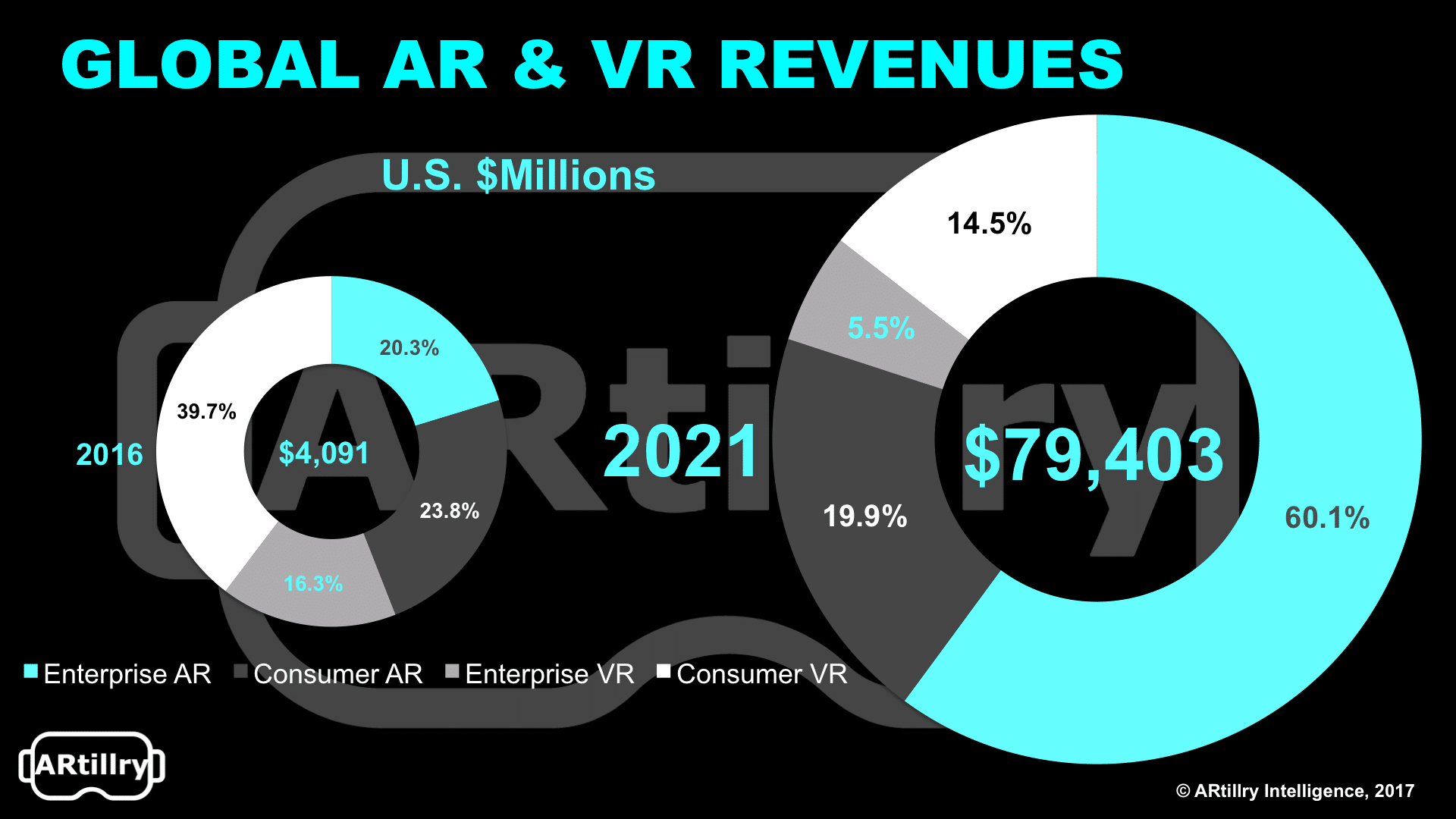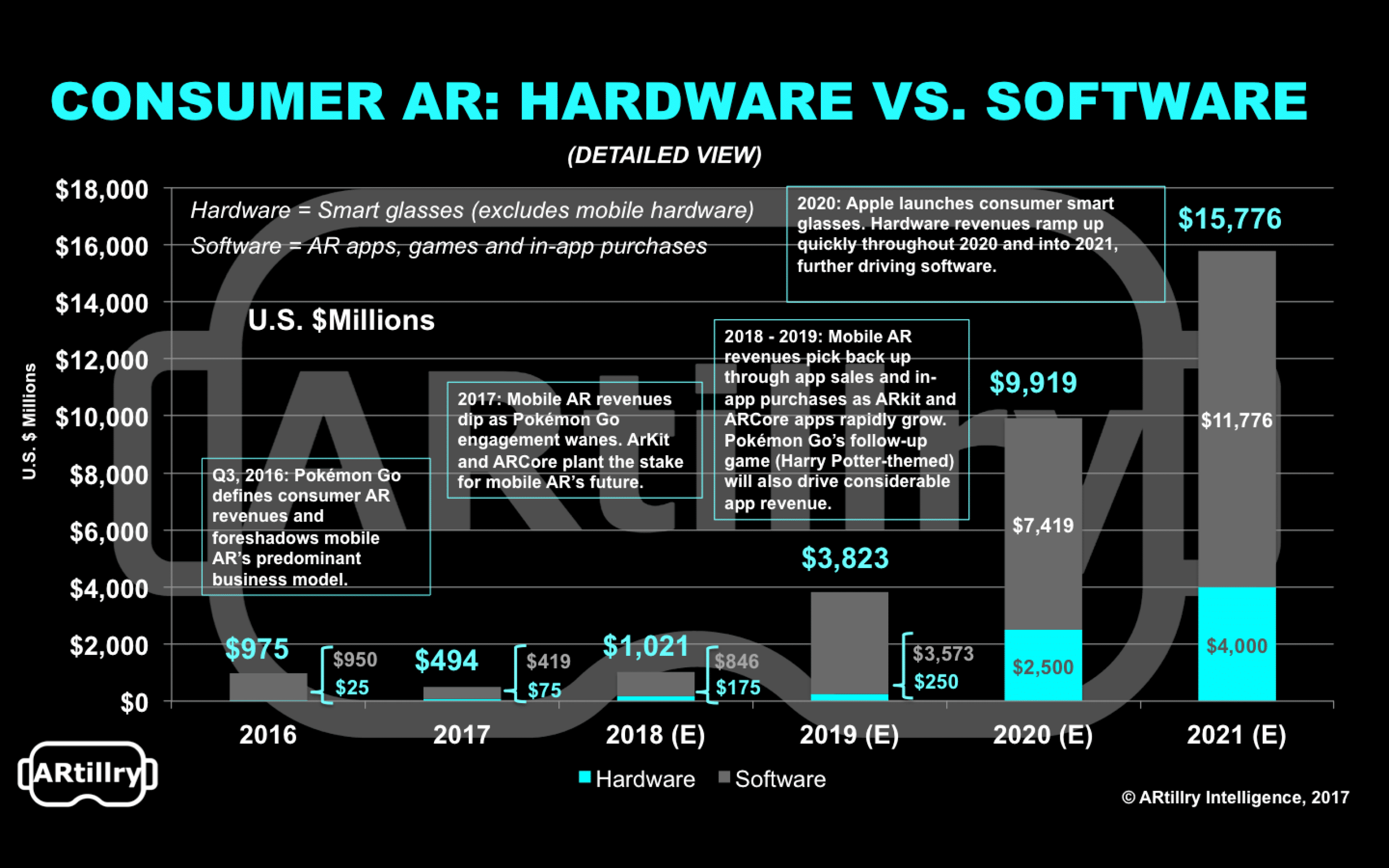
Among the sub-sectors of the XR spectrum — AR, VR and consumer and enterprise segments of each — Consumer AR has the second fastest growth and second largest eventual market size after enterprise AR (explored last week).
This was one of the main findings in ARtillry’s latest XR revenue forecast. Specifically, consumer AR will grow from $975 million in 2016 to $15.8 billion in 2021. But what’s driving that revenue growth? It’s a combination of hardware, software, mobile and (eventually) glasses-based AR.

Unpacking that further, revenues will be dominated by mobile for the next few years. Smart glasses are premature and don’t yet have the functionality and sleekness to satisfy stylistic requirements of consumer markets (this doesn’t apply in the enterprise).
So until Apple’s 2020 smart glasses — which will bring a classic Apple halo effect to AR glasses — it will be all about mobile. Revenues will be software-dominant during that time (mobile devices aren’t counted in this forecast), and include app revenues such as in-app purchases.
Much of this will evolve from the business model validated by Pokémon Go, which drove most 2016 consumer AR revenues. Niantic will also find success in its follow-up game to Pokémon Go, with architecture and game mechanics re-skinned to a Harry Potter theme.
Consumer AR will hit an inflection point – and shift share towards hardware revenue – starting in 2020 as viable consumer smart glasses finally arrive (again, driven by Apple). Meanwhile, development on mobile AR apps will be a training ground for an eventual glasses-dominant era

As for the revenue dip in 2017 shown in the breakdown above? That’s Pokemon Go’s 2016 revenue pop (almost $1 billion), which waned a bit in 2017. That will rebound in 2018 through the Harry Potter game as well as other revenue growth in ARkit and ARCore apps.
And regarding overall growth, it’s high rate is alarming at first and over-indexes to typical industry patterns. However such rates are endemic to early-stage sectors starting from such a small base (law of large numbers) and those with a heavy software component (scalable).
That’s the short version. Stay tuned for more data, and see more forecast details and methodology here.
For a deeper dive on AR & VR insights, see ARtillry’s new intelligence subscription, and sign up for the free ARtillry Weekly newsletter.
Disclosure: ARtillry has no financial stake in the companies mentioned in this post, nor received payment for its production. Disclosure and ethics policy can be seen here.
